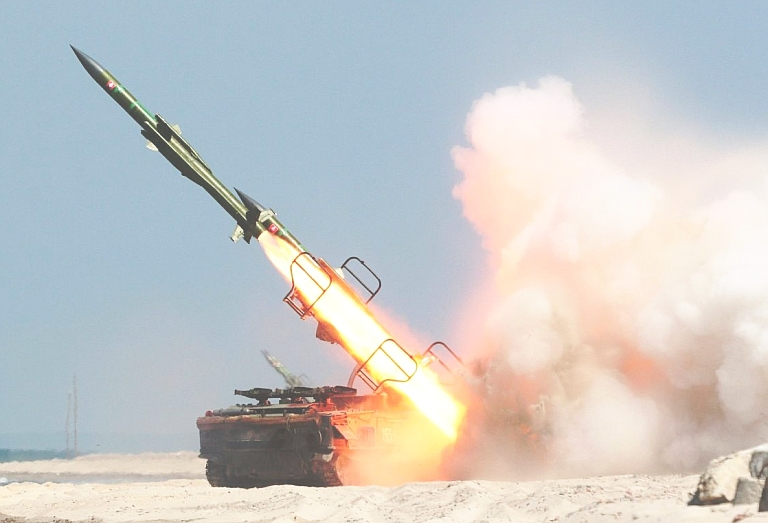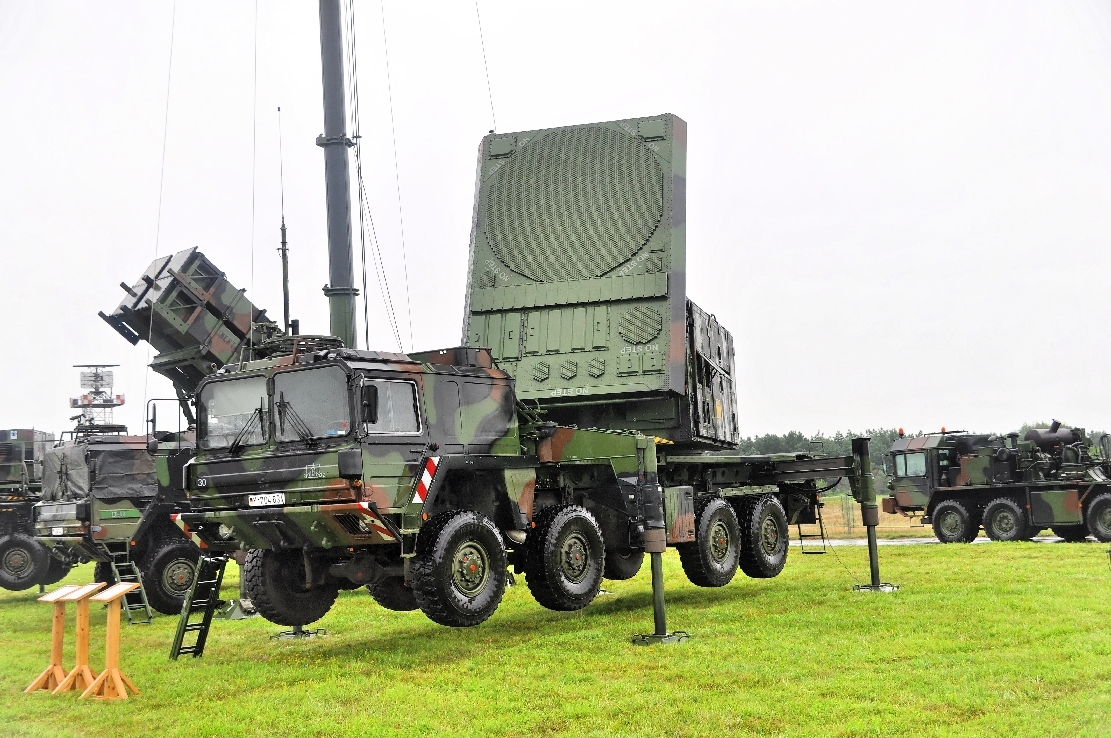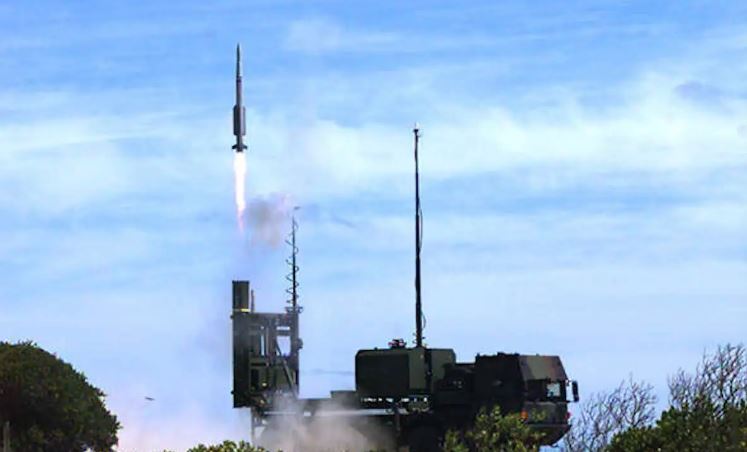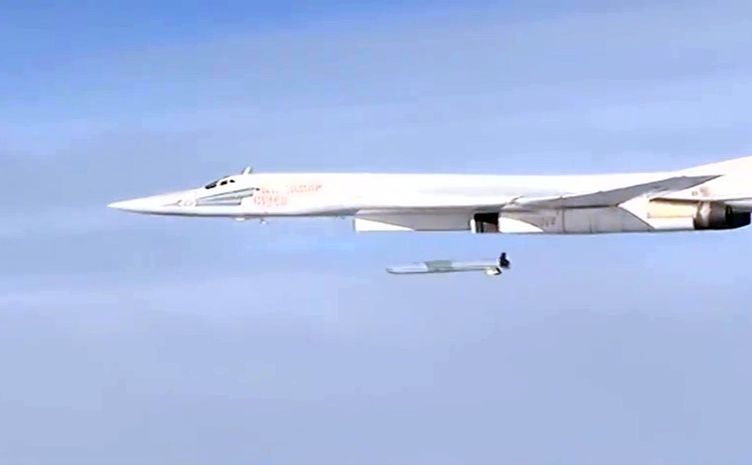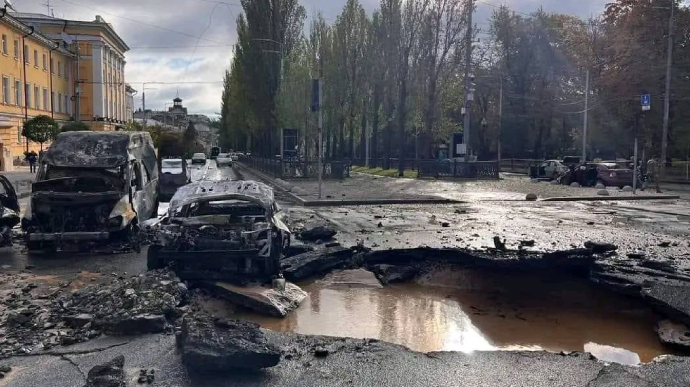The recent Pentagon leaks showed Ukraine’s possible defense missile shortage. Trent Telenko, an American military expert and retired US Department of Defense civil servant, analyzed the strengths and weaknesses of Ukraine’s air defense system and investigated how dire the missile shortage could be. According to Trent Telenko, the Ukrainian defense missile shortage may help Russia’s air forces to gain superiority in the Ukrainian sky unless Ukraine is supplied with Western fighter jets. Euromaidan Press publishes his analysis in full, with permission.
Ukraine started the war with a minimum of 20 S-300 (18 SA-10 and 2 SA-12), nine Buk M1 (SA-11), two reactivated S-125 (SA-3), and one reactivated 2K12 Kub (SA-6) medium-range surface-to-air missile batteries. A Ukrainian journalist (editor in chief of Defense Express) by the name of Serhii Zhurets in late 2016, citing parliamentary disclosures, estimated the remaining Ukrainian war stock of surface-to-air missiles (SAM) as follows:
- 5V55/S-300PS and PT (SA-10A/B) rounds at almost 3,000;
- 9M82/83/S-300V1 (SA-12A/B) at 800 (Ukrainian media speculated that the Air Force of Ukraine had the bigger 9M82 in stock);
- 9M38M1/Buk M1 (SA-11) at 1,300.
Many of the 5V55 supersonic surface-to-air missiles were lost in the opening week of the war. At least two or three S-300PT/PS missile system batteries were destroyed in February-March 2022. One S-300PS missile system was destroyed escaping Berdiansk (Zaporizhzhia Oblast, southeastern Ukraine), another unserviceable S-300PT missile system battery in Zhytomyr (Zhytomyr Oblast, northern Ukraine) was caught at its base, and one S-300PT was claimed killed in the Kharkiv area (eastern Ukraine).
The Oryx site lists 10 Flap Lid radars used by the Air Force of Ukraine S-300s as visually confirmed as destroyed. However, one Flap Lid pictured on Oryx might be a known Russian 5N63S from occupied Crimea, and others looked like repeat photos of the same systems at different times and angles.
Other contemporaneous to Zhurets’ Ukrainian sources gave a number of 10,000 to 12,000 missiles for twenty legacy SA-3 Goa/S-125 surface-to-air missile system batteries in mothballs, but only two batteries had been restored to service by February 2022, a significant number of these missiles were exported, and it was reported but not visually confirmed that both operational S-125 batteries were lost in the South in the opening week of the full-scale Russian invasion. Ukraine also had 20 batteries of the 2K12 Kub mobile surface-to-air missile system (NATO reporting name: SA-6 GAINFUL) in mothballs. Still, some were exported, and only one battery was considered operational in February 2022.
The Ukrainian 2K12 surface-to-air missile system could only shoot the 9M9M missile. Early pre-invasion videos showed some 9M9M cooking off in depot fires, but it was not reported how many of them were destroyed. The Soviet logistical practice was to stock one round per rail in a battery plus one or more sets of reloads. So, Ukraine may have 20 air defense missile batteries with 480 9M9M missiles. Or more if multiple sets of reload were stocked.
Hear and destroy: Ukrainian artificial intelligence project Zvook helps shoot down Russian missiles
Assuming 4,800 of 5,580 medium-range SAMs survived initial Russian Suppression and Destruction of Enemy Air Defenses (SEAD) strikes, an order of slightly over 11 SAMs per day would have been expended if the inventory was gone by now. Some of the early air battles may have seen over 100 SAMs per day expended. So, Ukraine will run out of legacy SAM inventory in the coming month(s), exactly when depending on how many cruise missiles and drones the Air Force of Ukraine has to shoot down. Western-supplied SAM replacements delivered to date are maybe half of the legacy SAM fleet in terms of area coverage at low/medium levels.
So far, Ukraine has been promised nine batteries of American medium-range surface-to-air missile systems I-HAWK and HAWK 21, eight batteries of the medium-range ground-based air defense system NASAMS, four batteries of the medium-range air defense system Iris-T, and two batteries of Patriot PAC2/PAC3. Plus, upgrades for Buk M1 launchers to shoot RIM-7 Sea Sparrow missiles (a short-range anti-aircraft and anti-missile weapon system). Poland has supplied at least one Neva SC mobile S-125/SA-3 surface-to-air missile system battery, but how many more may have been provided or will be supplied is unknown.
Ukrainian troops impress US trainers as they rapidly train on Patriot missile system – CNN
Furthermore, at least two 2K12 Kub/SA-6 mobile surface-to-air missile systems are being supplied from Eastern European NATO states. But much of this gear is still in the delivery pipeline and many months away. And one of the NATO missile batteries was returned due to unrepairable technical faults. It has been speculated this was an I-HAWK battery. In comparing all systems, defended footprint versus altitude is an issue.
For most of these “medium-range” surface-to-air missiles have a low-altitude footprint, which is a circle of 40-50 kilometers due to the radius of the Earth and radar horizon, limited by antenna elevation above ground level. Range at medium to high altitudes is usually determined by the specific impulse of the propellant and the size of the SAM.
Thus, even an ancient MIM-23 I-HAWK has low-level coverage comparable to S-300P systems lacking the 40V6M radar mast. And the MIM-23 outranges the Buk M1 missile system. The Air Force of Ukraine’s S-300PT or S-300PS missile systems with the 40V6M mast can see and engage farther than an I-HAWK missile system.
However, mobility is important for survivability. Soviet battlefield SAMs are usually best for this, usually five minutes to shoot and scoot. I-HAWKs and Patriots (the MIM-104 Patriot is a surface-to-air missile system) are not that mobile. I-HAWKs are not as capable as S-300 missile systems in medium/high altitude coverage and are inferior to both S-300PT/PS and Buk missile systems in mobility.
Patriot missile defense systems from two more countries arrive in Ukraine
In terms of full capability replacement, only the Patriot can replace Ukraine’s S-300PT/PS and S-300V1 for high/fast targets. A MIM-23 I-HAWK replaces the low altitude capability of S-300s but has a fraction of the medium to high altitude capability and inferior mobility.
The MIM-23 does replace the capability of the Buk M1 at all altitudes and goes a bit further, but it lacks the firepower of the Buk M1. I-HAWK batteries can only engage two targets at a time, while each Buk’s radar system or a transporter erector launcher (TELAR) can engage one at a time because a battery has four TELARs, so it can engage twice the number of targets an I-HAWK battery can engage. Late model Phase III I-HAWK (a surface-to-air missile system) illuminators include the Low-Altitude Simultaneous Hawk Engagement (LASHE) fan beam antenna to increase the number of engaged targets, but this was designed to engage closely spaced targets.
More Patriot batteries are desperately required. The high-altitude coverage of one 160-km range Patriot battery is equivalent to around either four S-300PS batteries shooting the 5V55R surface-to-air missiles or four S-300V1 batteries shooting the 9M83 surface-to-air missiles. The math here is grim. Two Patriot batteries only replaced the capability of eight S-300 batteries of the 20+ batteries of S-300PT/PS Ukraine had at the start of the full-scale invasion. Basically, a mix of Patriots, I-HAWK and HAWK-21, NASAMS, and Iris-T Surface Launched Medium Range missile systems can make up the required capability. But most of the latter two missile systems have yet to come off production lines.
Only Patriot and HAWKs can be delivered right now from stock and operational units. And as for the RIM-7 reloads on the Buk M1 missile systems, that missile has a smaller footprint than the legacy 9M38M1 surface-to-air missiles. Depending on the variant of the Sea Sparrow missile systems provided, Ukraine probably gets one-third up to half of the area coverage of the 9M38M1 surface-to-air missiles at best. So, Ukraine would need two to three times as many Buk or Kub batteries for the same defended air space volume.
The Air Force of Ukraine operates all Ukrainian area defense SAMs, and the Army operates all short-range air defense systems (SHORADS). They both have critical war shot shortfalls, and, as demonstrated above, the Biden Administration is asleep at the wheel. Ukraine sees fighter jets as a means to kill Russia’s most accurate cruise missiles, the KH-101, KH-555, and Kalibr plus Shaheds, as soon as they cross the border (see the Air Force of Ukraine’s fighter pilot Juice’s interview on that).
Like previous weapons, F-16s will not provoke Russia to “escalate” – Ukraine’s FM
The prolonged cruise missile and Shaheed bombardment have seen a lot of SHORADS diverted to Ukrainian strategic air defense. But for the offensive, Ukraine needs both more area defense and SHORADS to cover the bigger area they are operating in. Russians are now exploiting a shortage of medium air defense SAMs to conduct toss bombing attacks with their guided FAB glide bombs.
And the permanent national security bureaucracy in the Biden Administration claims that F-16 fighter jets are not a priority for Ukraine, despite Russian airpower, and say with a straight face that there is “no urgency” in supplying Ukraine with Western fighters. However, Ukraine’s Defense Minister Oleksii Reznikov previously stressed that air defense is priority number one for Ukraine. Looks like Pentagon officials are misleading the US Congress.
This is the same “Let’s pretend” game the Clinton Administration saw in the 1990s in Bosnia and Kosovo with the permanent national security bureaucracy. Still, Joe Biden lacks Bill Clinton’s youthful energy to make them follow the national interest over their own narrow careerist ones.
Related:
- Ukraine altered military plans because of alleged Pentagon documents leak – CNN source
- Ukraine delays counteroffensive due to slow equipment delivery and ammo shortage, Washington Post says
- Leaked US docs show Russia can fund Ukraine war for another year despite sanctions
- Ukraine needs F-16s for defense against modernized Russian bombs – Air Force Command
- Russia drops dozens GPS-guided bombs on Ukraine every day, Ukraine’s Air Force spox says
- Lack of fighter jets may hamper Ukrainian counteroffensive – Financial Times
- The US commends Ukrainian pilots’ proficiency and retraining pace – Ukraine’s Air Force
- Retired German general argues Ukraine needs western fighter jets, not just air defense systems
- Ukraine pleads for air defense systems, missiles ahead of Ramstein meeting
- Russian missiles used against Ukraine and how to stop them




